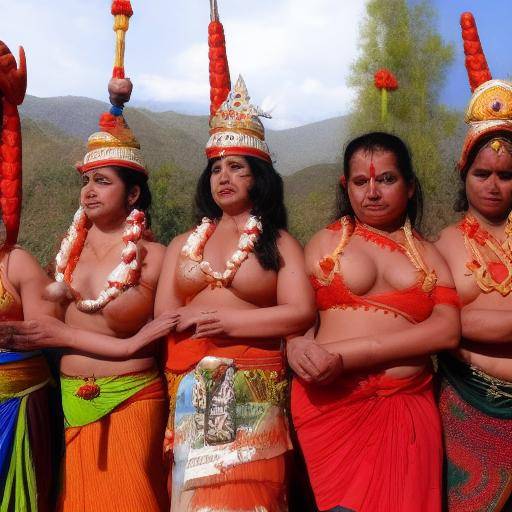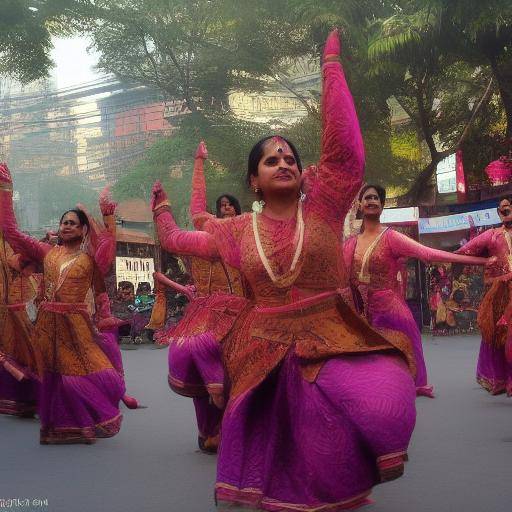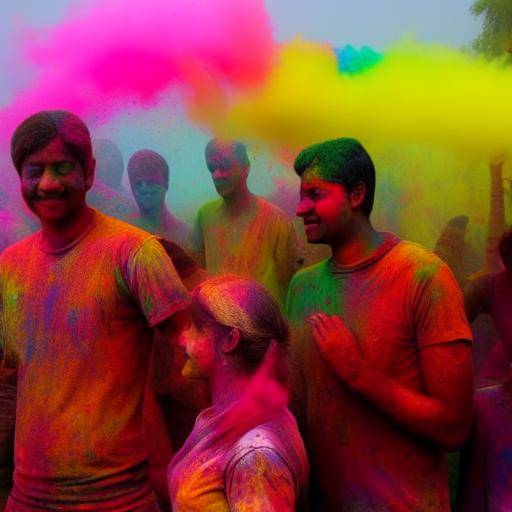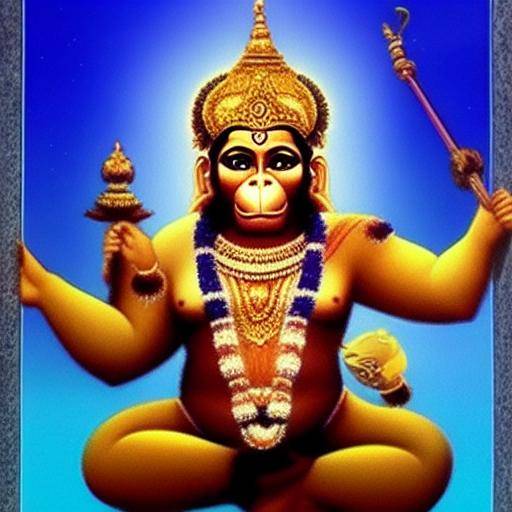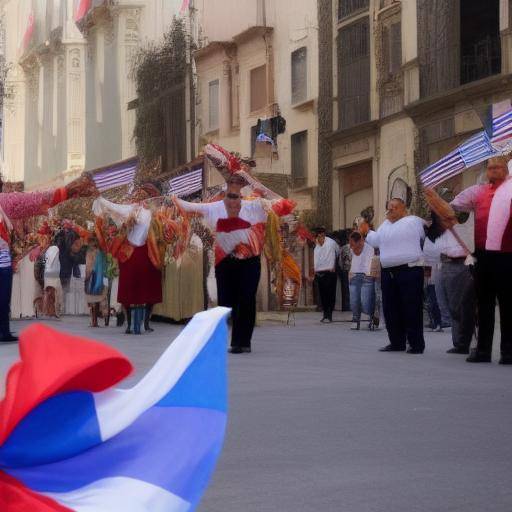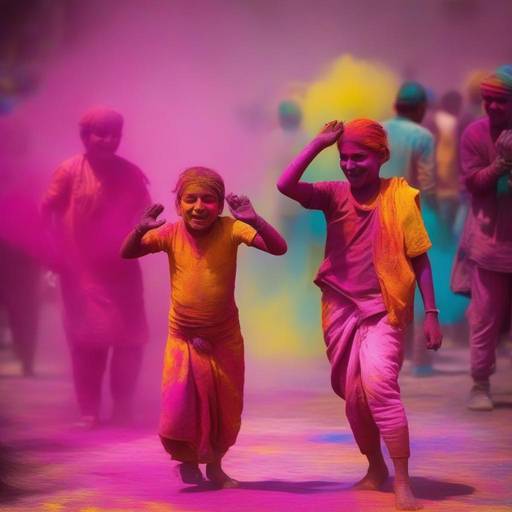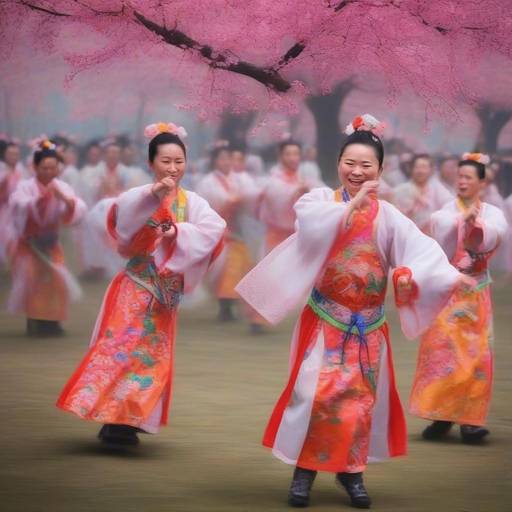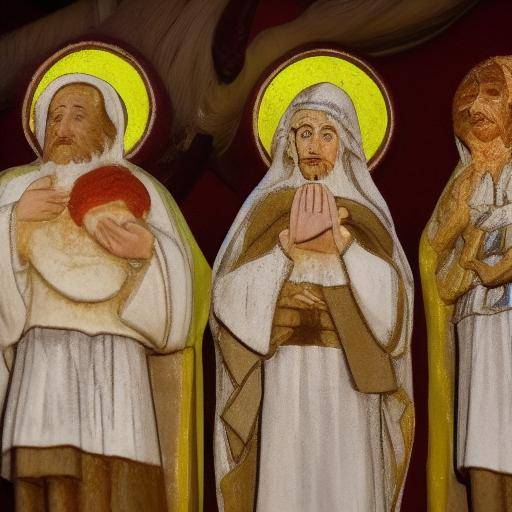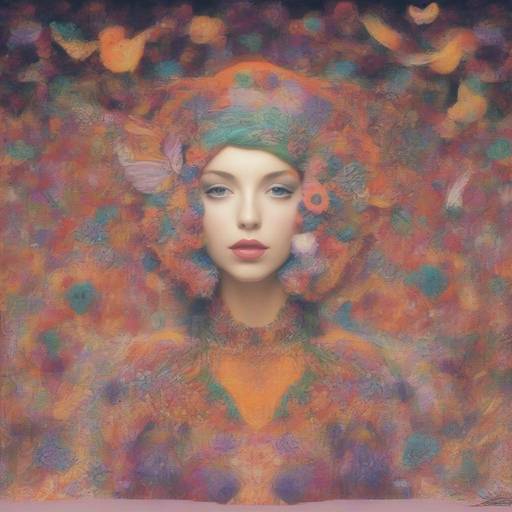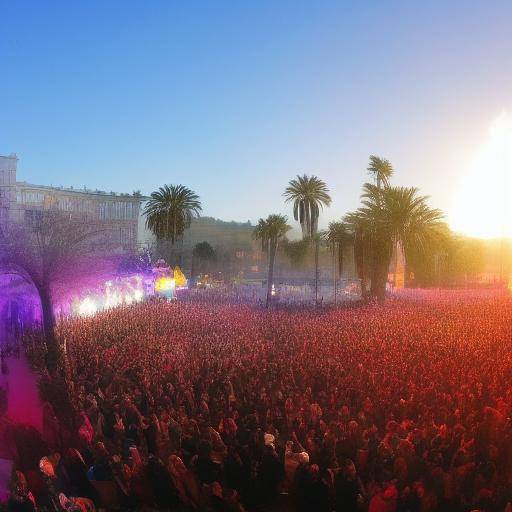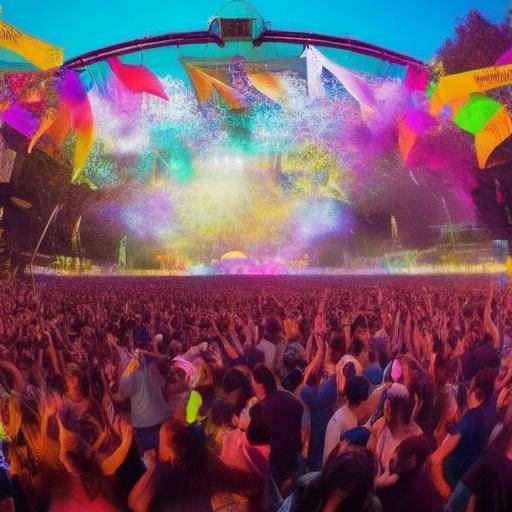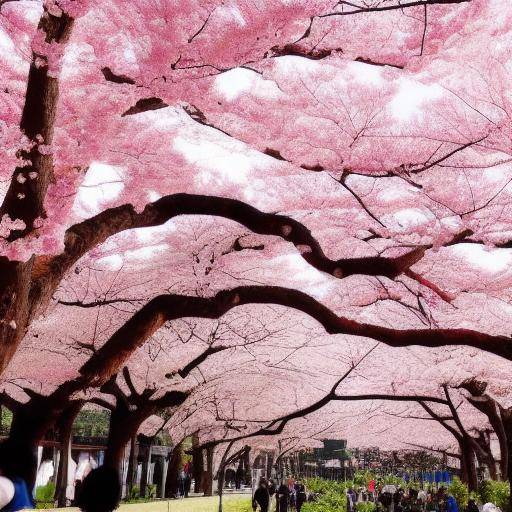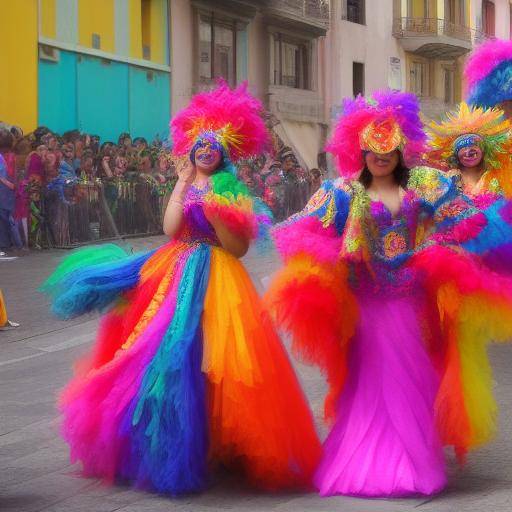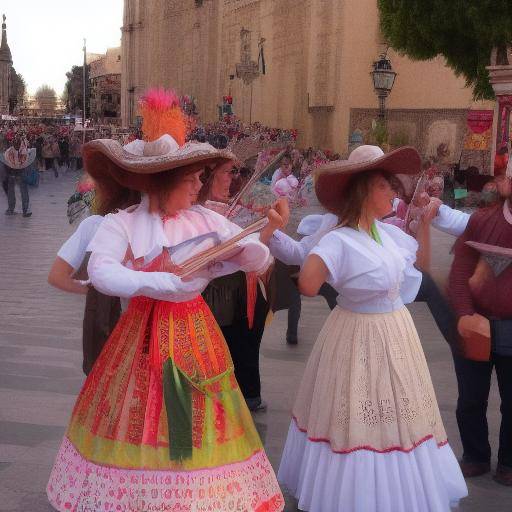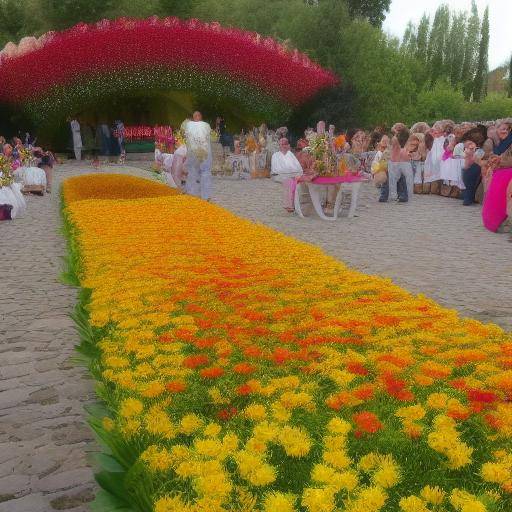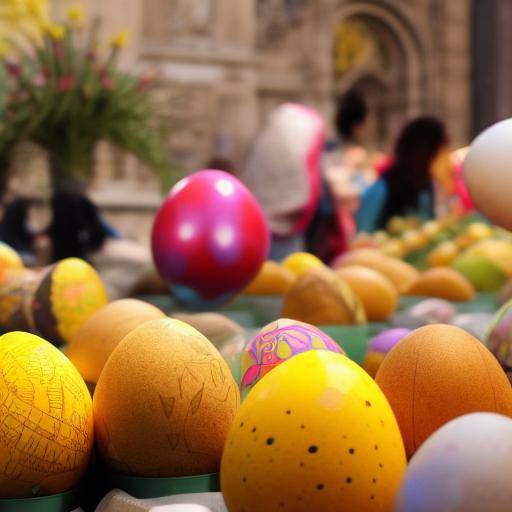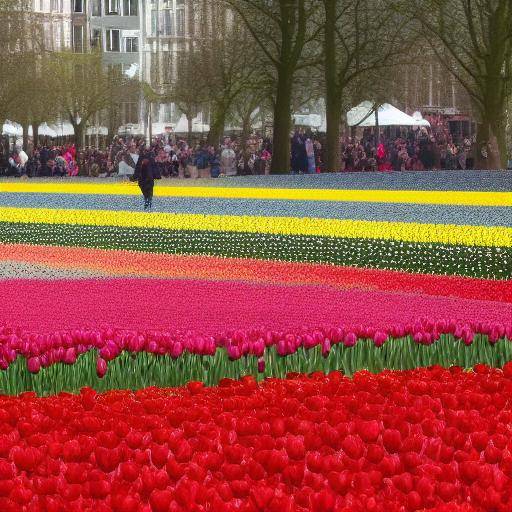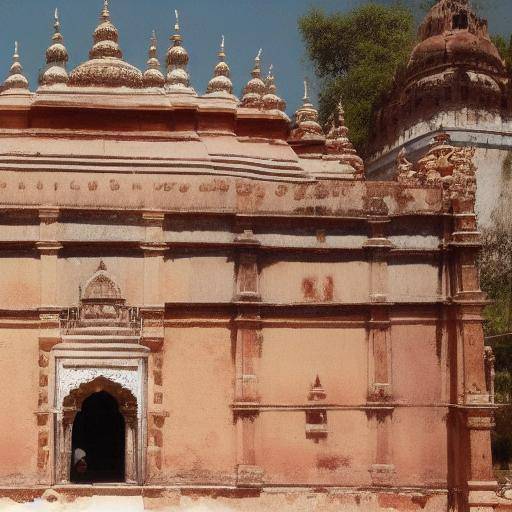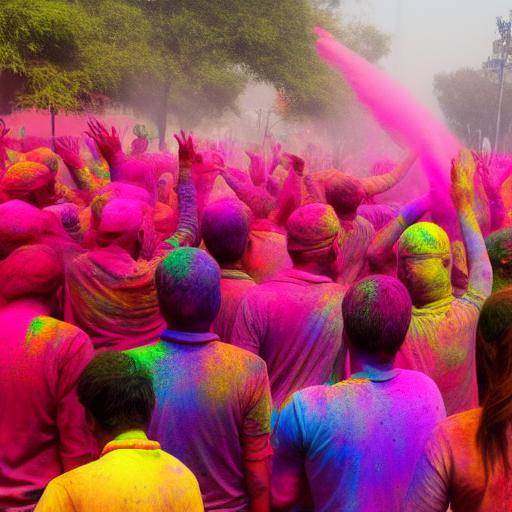
The Holi, also known as the "Festival of Colors", is one of the most vibrant and significant celebrations in India. With its roots rooted in Hindu mythology and its association with the arrival of spring, this festival is more than just a celebration; it is a unique cultural experience that embodies joy, renewal and fraternity. In this article, we will explore in detail the fascinating tradition of the Holi, as well as its relationship with the spring festivals in India, offering our readers a deep and enriching look.
Introduction to Holi: A Festival of Colors and Celebration
The Holi is an annual festival held in India and elsewhere in the world where the Hindu community is present. This festival, which usually takes place in March, marks the advent of spring and pays tribute to the victory of good over evil. During the Holi, the streets and squares are filled with people who come together to throw colored dust (gulal) and dance to the rhythm of traditional music. The Holi is an inclusive festival that transcends social, economic and religious barriers, inviting everyone to participate in this explosion of joy and camaraderie.
Origins and Meaning of the Holi
The history and meaning of the Holi go back to the Hindu mythological accounts, where the figure of Krishna plays a central role. It is said that Krishna, an avatar of the Vishnu god, used to play and joke with his friends, handing them in bright colors. This tradition has become an integral part of the festival, symbolizing the elimination of barriers between people and the celebration of diversity.
The Holi and the Spring Festivals in India
Diversity of Spring Festivals in India
India is known for its rich cultural diversity, and this is reflected in the multitude of festivals held throughout the country during the spring season. The Holi is only one of the many festivals that highlight the arrival of spring, each with its own regional traditions, rituals and meanings. Some of the most prominent festivals include Ugadi in southern India, Baisakhi in the north, Gudi Padwa in the west and Pohela Boishakh in the east.
Connections and Synergies between Spring Festivals
Despite their differences, these festivals share a common driving thread: renewal, hope and community. Regional celebrations may vary in their specific practices, but they all share the spirit of welcome to the new station, gratitude for the abundance and union of families and communities.
The Holi in the News: Evolution and Contemporary Meaning
Cultural and Social Impact of the Holi
In contemporary India, Holi remains an event of great importance and cultural significance. Beyond its religious roots, the Holi has evolved to become a symbol of shared unity and joy. The festival transcends religious borders and has become popular among people of diverse beliefs and cultures.
Challenges and Disputes
Despite its popularity and attractiveness, Holi is not exempt from criticism and controversy. The use of certain chemicals in colour powders has generated health and environmental concerns. In addition, questions have been raised regarding respect for personal limits during the celebrations, which has generated discussions on consent and mutual respect among participants.
Current Trends and Holi Futures
As society evolves, Holi has also experienced changes in its observance and associated practices. New ways to celebrate the festival, such as theme events of music, traditional dances and artistic activities, have gained popularity, attracting a wider and more diverse audience.
Comparative Analysis: Holi, Spring and India Festivals
Similarities and Cultural Differences
Both the Holi and the spring festivals in India share a deep connection with the centuries-old nature, renewal and traditions. However, each festival has its own distinctive features that reflect the country's cultural and regional diversity. While Holi focuses on interaction through colors and music, other festivals such as the Baisakhi incorporate agricultural rituals and traditional dances.
Practical Tips and Recommendations
Celebrate the Holi in Responsible Form
If you plan to participate in the Holi or other spring festivals in India, it is important to take into account some practical tips to enjoy the experience in a responsible and respectful way. Choose organic and biodegradable powders, respect the personal limits of others and participate in the holidays with an attitude of openness and respect for local culture.
Conclusions and FAQs
Conclusions
Holi and spring festivals in India represent much more than simple celebrations; they are expressions of cultural identity, rooted traditions and the renewal of life. These festivities exemplify India's wealth and diversity, offering visitors and participants a unique vision of the country's vibrant culture.
Frequently asked questions
What is the cultural importance of Holi in India?
Holi is culturally significant for its ability to unite people, regardless of their social or religious origin, and to foster friendship and forgiveness. In addition, it symbolizes the arrival of spring and the victory of good over evil in Hindu mythology.
How is Holi celebrated in different regions of India?
The Holi traditions vary in different parts of India. For example, in the north, the festival is associated with religious rituals, while in the south, it is celebrated with the exhibition of a traditional dance called "Kathakali".
What are the typical foods consumed during the Holi?
During the Holi, it is common to enjoy delicious dishes such as gujias, malpuas and thandai, a special drink prepared with milk, spices and nuts.
What is the meaning of the colors in the Holi?
The colors cast during the Holi reflect the joy and vivacity of spring, as well as diversity and unity among people. Each color has its own symbolic meaning, as the green that represents the harmony and the red symbolizing passion.
Is there a specific dress code for the Holi?
While there is no strict dress code, it is recommended to wear old and comfortable clothes that can be stained. Many participants opt for white garments to highlight the colors they throw during the holidays.
What steps are being taken to address Holi-related environmental concerns?
In an effort to address environmental concerns, organic and biodegradable powders are being promoted, thus reducing the negative impact on the environment and health of people.
Recommended External Links
With this in-depth look at the Holi, the spring festivals in India and its current meaning, we hope to have given our readers an enriching understanding of these unique celebrations, their entrenched traditions and their impact on contemporary society. The Holi, with its show of colors and joy, remains one of the most captivating festivals in the world, showing the wealth and variety of India and perpetuating its millennial cultural legacy.
Concluding, the Holi and the spring festivals in India not only offer a visually impressive experience, but also open a window to the rich cultural and spiritual diversity of a country deeply rooted in its ancestral traditions.

